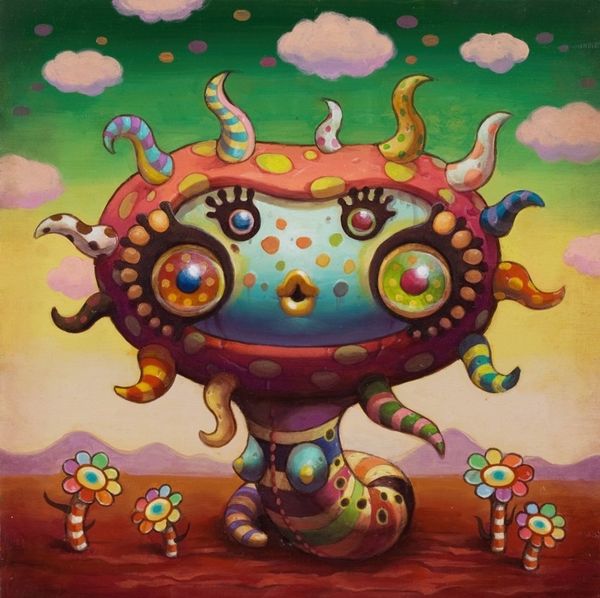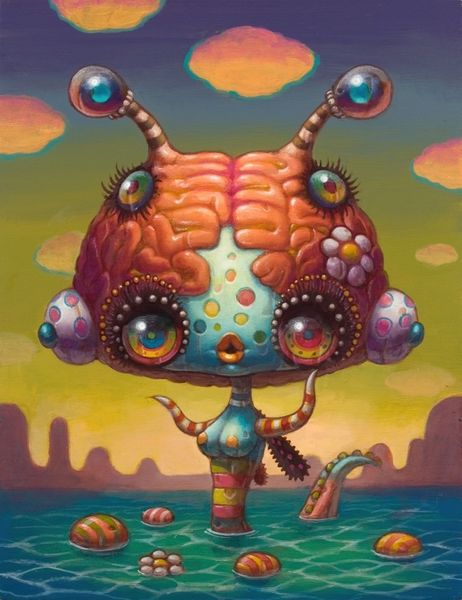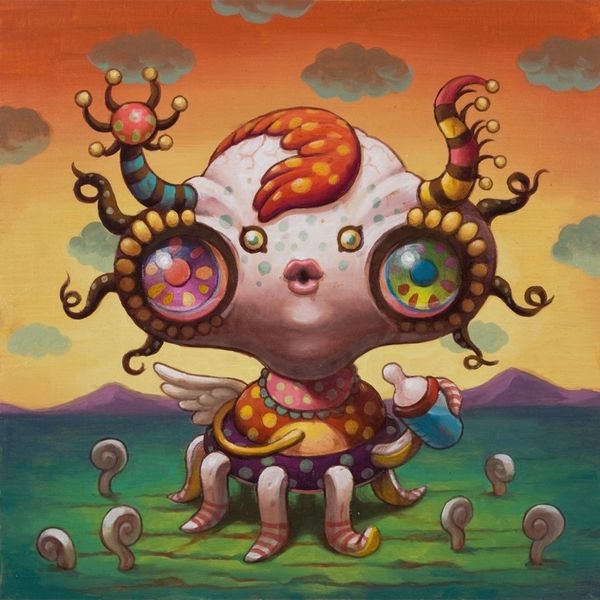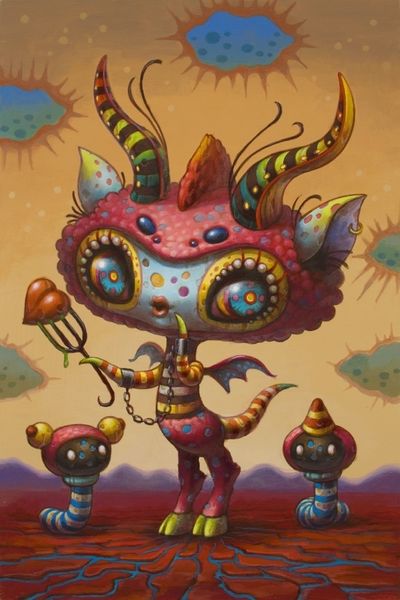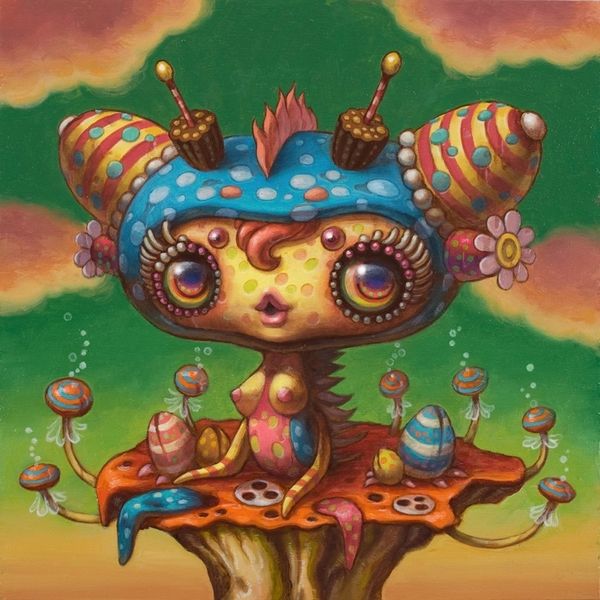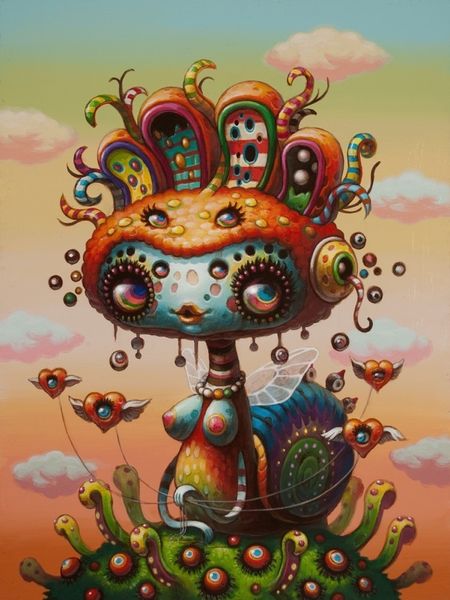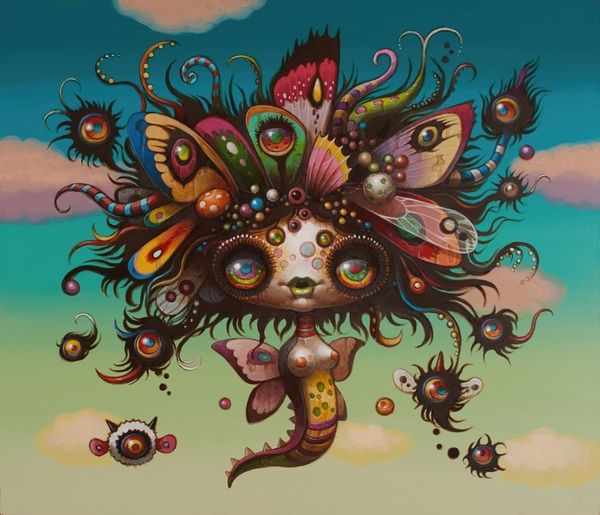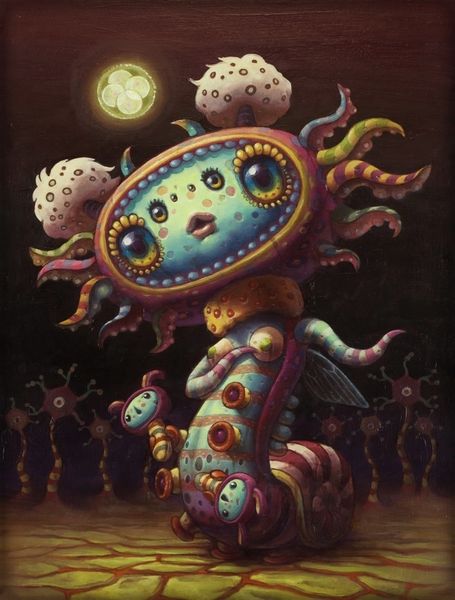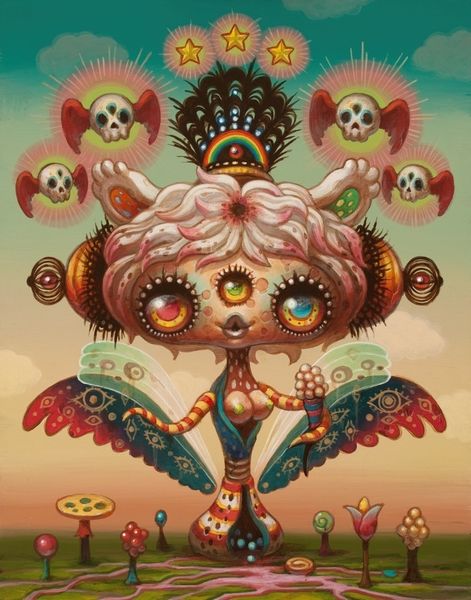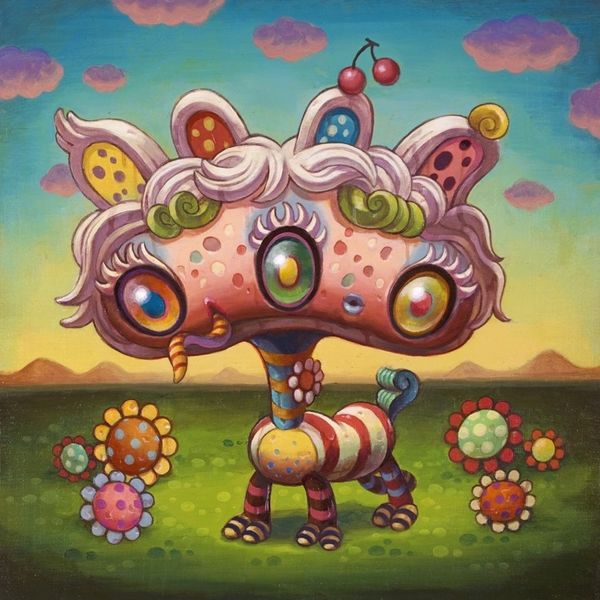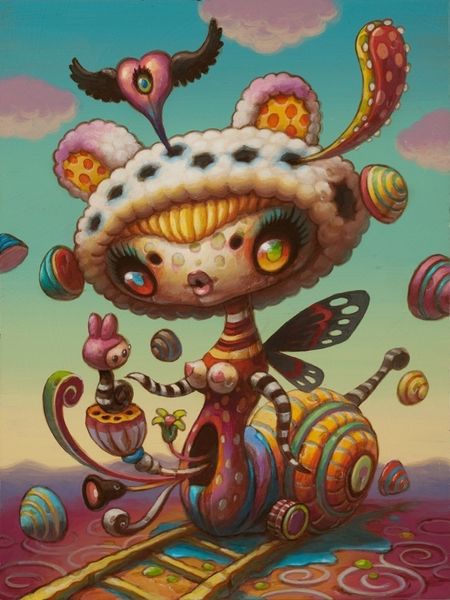
painting, acrylic-paint
#
organic
#
pop-surrealism
#
fantasy art
#
painting
#
caricature
#
caricature
#
fantasy-art
#
acrylic-paint
#
figuration
#
surrealism
#
realism
Copyright: Modern Artists: Artvee
Curator: Welcome. We’re now viewing "The God of Death," a work executed in acrylics on canvas by Yoko d’Holbachie. What are your initial thoughts? Editor: A riotous juxtaposition of cuteness and morbidity. The figure seems both inviting and unsettling, hovering against this soft skyscape. There’s a certain tension in its structure. Curator: Indeed. The piece plays on our preconceptions. Death is often portrayed grimly, but here, it’s almost childlike, surrounded by heart-shaped winged eyeballs. This recurring symbol, the 'all-seeing eye,' appears quite often, doesn’t it? Editor: The all-seeing eye, yes, evoking concepts of omniscience and judgment. Holbachie cleverly perverts this loaded symbol by putting it in the bodies of cartoon hearts. Also, consider how the organic and artificial meld—the figure's spotted, bulbous form mimics biological shapes but with synthetic colors and patterning. Curator: And the use of those intense, almost neon colors? Death here feels more like a psychedelic journey, a cartoonish entity within a dreamscape rather than a solemn end. Is there some cultural commentary implicit, you think, in its use? Editor: Absolutely. This almost childlike god could comment on how the cultural view of death has evolved, becoming increasingly distant from immediate experience, filtered through screens. Or how death is sometimes represented abstractly as some kind of transformative power for creation. Note how precise the application of acrylics has been—this reinforces the idea that the artwork’s artificial cuteness can mask darker implications. Curator: This really plays on how cultures grapple with mortality. Do you think the caricatured rendering desensitizes the impact, rendering it digestible, perhaps even harmless? Editor: I think its cartoon-like form, complete with wide, innocent eyes, renders death less severe, or even invites viewers into it in an unexpected, perhaps disarming way. But in its synthesis, one can interpret themes beyond merely a cute image. The more you engage, the more the interplay of color, shape, and symbol reveals about our collective anxiety regarding something incomprehensible. Curator: Yes, by stripping away the gloom, it dares us to engage more intimately. I can leave having pondered about familiar fears in completely new ways. Editor: Indeed, and as such it stays with you much longer.
Comments
No comments
Be the first to comment and join the conversation on the ultimate creative platform.
